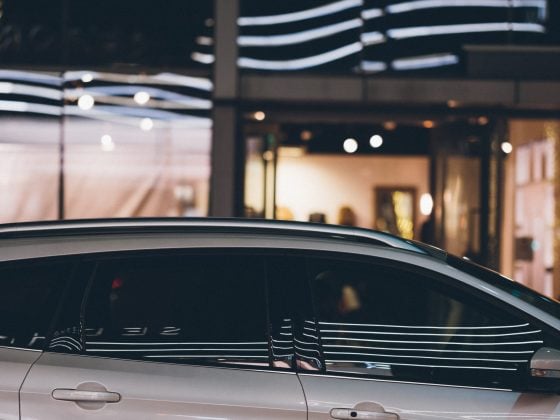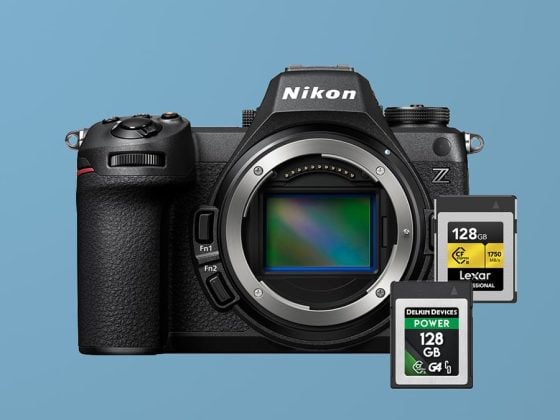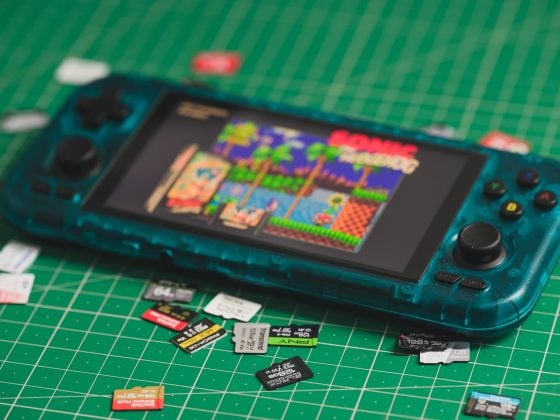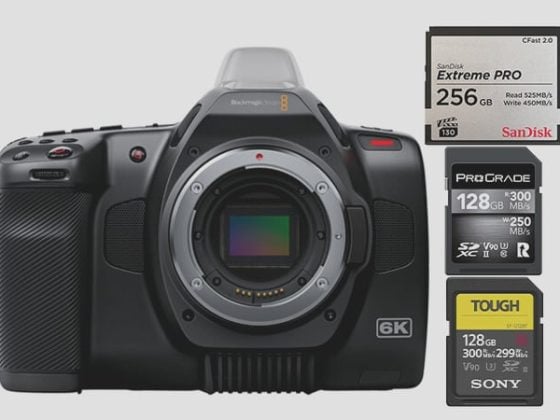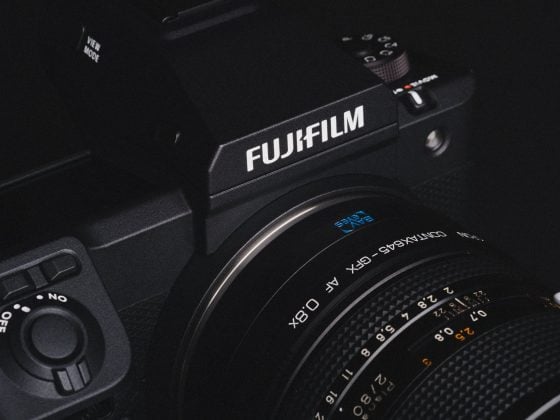The Sony A7r III has some new internal hardware that allows for faster memory card performance, a larger buffer, as well as UHS-II memory cards. Use this guide to find the fastest memory cards for your Sony A7 III.
Sony A7r III Specs
Sensor: 42MP Full Frame 15-Stops Dynamic Range
Processor: BIONZ X Image Processor & Front-End LSI
Buffer: 2.7GB
Memory Card Compatibility: UHS-I / UHS-II
Time To Clear Buffer: 17 seconds (Lexar 2000x)
Shots To Fill Buffer Uncompressed: 30 (Lexar 2000x)
Shots To Fill Buffer Compressed: 83 (Lexar 2000x)
Best Accessories For The Sony A7r III
Sony A7r III | The Speed Test
I’ve tested every card in the Sony A7r III using uncompressed RAW. I’ve taken the fastest speed out of three tests unless the card showed mixed results, in that case, I took the average. The only card that was wild was the PNY U3.
I’ve also tested a few cards using Compressed RAW. I’ve found the speed is slightly faster, about 10MB/s for the UHS-II cards. I’ll update the list with those results as well in the future.
For the 4k video test, I shot on each card for about 30 seconds to a minute to make sure the cards weren’t rejected by the camera. Usually, Samsung cards never work for 4k video in Sony cameras, however, this time a few cards worked. I still would avoid Samsung cards just to be safe.
| SD Memory Cards | USB 3.0 Read | USB 3.0 Write | 4k | Sony A7r III |
| UHS-II | ||||
| Delkin V90 | 245.1 MB/s | 164.6 MB/s | Y | 128.04 MB/s |
| Lexar 2000x | 272.7 MB/s | 244.5 MB/s | Y | 127.95 MB/s |
| Transcend | 290.2 MB/s | 182.1 MB/s | Y | 127.71 MB/s |
| Hoodman Steel 2000x | 268.7 MB/s | 183.9 MB/s | Y | 127.61 MB/s |
| Fujifilm Elite II | 294.0 MB/s | 181.6 MB/s | Y | 127.60 MB/s |
| Toshiba Exceria Pro | 258.8 MB/s | 226.5 MB/s | Y | 127.49 MB/s |
| Sandisk Extreme Pro 300 | 263.2 MB/s | 233.4 MB/s | Y | 127.01 MB/s |
| Sony G | 259.2 MB/s | 234.5 MB/s | Y | 126.84 MB/s |
| Sandisk Extreme Pro 280 | 260.5 MB/s | 214.8 MB/s | Y | 126.10 MB/s |
| Adata V90 | 256.5 MB/s | 231.7 MB/s | Y | 112.67 MB/s |
| Sony M | 253.2 MB/s | 91.62 MB/s | Y | 88.74 MB/s |
| Delkin 1900X v60 | 273.3 MB/s | 97.3 MB/s | Y | 88.44 MB/s |
| Lexar 1000x | 147.4 MB/s | 78.4 MB/s | Y | 73.13 MB/s |
| UHS-I | ||||
| Sandisk Extreme Pro U3 | 98.6 MB/s | 90.8 MB/s | Y | 75.52 MB/s |
| Kingston U3 | 98.1 MB/s | 90.4 MB/s | Y | 75.26 MB/s |
| Delkin 633x U3 | 98.3 MB/s | 88.7 MB/s | Y | 74.99 MB/s |
| Samsung Pro+ U3 | 97.5 MB/s | 87.3 MB/s | N | 73.12 MB/s |
| Samsung Pro U1 | 96.3 MB/s | 82.2 MB/s | N | 70.98 MB/s |
| Samsung Pro U3 | 97.7 MB/s | 78.6 MB/s | Y | 69.07 MB/s |
| Sony U3 – Old Model | 96.5 MB/s | 84.5 MB/s | Y | 67.93 MB/s |
| Transcend U3 | 96.7 MB/s | 84.9 MB/s | Y | 65.57 MB/s |
| Sandisk Extreme Plus U3 | 99.0 MB/s | 64.4 MB/s | Y | 58.27 MB/s |
| PNY Elite Performance U1 | 96.5 MB/s | 66.5 MB/s | Y | 58.04 MB/s |
| Lexar 633x U3 | 93.3 MB/s | 67.3 MB/s | Y | 56.57 MB/s |
| Sony U3 – New Model | 96.7 MB/s | 56.2 MB/s | Y | 55.04 MB/s |
| Lexar 600x U1 | 95.4 MB/s | 64.8 MB/s | Y | 53.77 MB/s |
| Sandisk Extreme U3 | 72.43 MB/s | 54.1 MB/s | Y | 49.03 MB/s |
| PNY Elite Performance U3 | 96.5 MB/s | 66.1 MB/s | Y | 45.74 MB/s |
| Sandisk Ultra U1 | 99.3 MB/s | 36.1 MB/s | N | 26.77 MB/s |
| Samsung U1 EVO | 47.7 MB/s | 21.96 MB/s | N | 21.18 MB/s |
Sony A7r III Best Memory Cards
Sony cameras have always been finicky with memory cards and there is a long history regarding which cards will work and which cards will likely not work. Here are the Top 5 memory cards you should consider for your Sony A7rIII.
This will likely be the same for the upcoming Sony A7III and the Sony A7sIII.
Sony A7r III Top 5 Memory Cards
The Sony A7rIII has two memory card slots but only one takes UHS-II cards. So you can either buy both UHS-II cards and not worry about mix and matching, or save yourself some money and buy a UHS-I card for the UHS-I slot.
UHS-II by default will be the fastest memory card for your Sony A7rIII as long as you stick with the top performers.
For UHS-II memory cards also consider the Delkin and Toshiba cards.
Sony 64GB UHS-II G
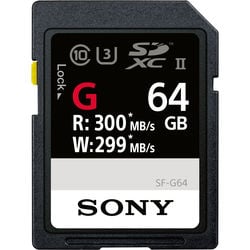
This is Sony’s latest UHS-II card and it’s fast. Definitely as good as the Sandisk Extreme Pro UHS-II or even the Lexar 2000x. I highly recommend this card for the Sony A7rIII. Sony brand cards almost never have compatibility issues with 4k video recording.
– Amazon
Sandisk 64GB UHS-III 300MB/s
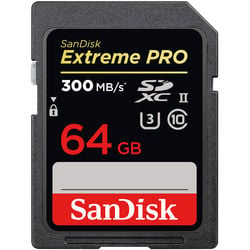
Sandisk is the next runner-up. They’ve always made the best cards and you can never go wrong with going Sandisk. The UHS-II Sandisk Extreme Pro is usually the fastest card when tested but the Sony G and the Lexar 2000x are always close, sometimes slightly faster.
– Amazon
Lexar 64GB UHS-II 2000x
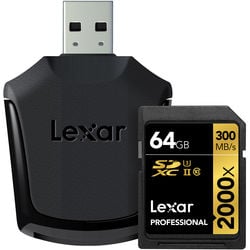
Lexar was the original best UHS-II memory card but the company may be going away eventually. Some of their cards have already been discontinued and they’ll likely get more and more difficult to find. So although the 20000x is an amazing card, for future and warranty purposes, we just don’t know what’s going to happen. I list them anyway just because the card reader they come with is nice.
– Amazon
Sandisk Extreme Pro UHS-I U3
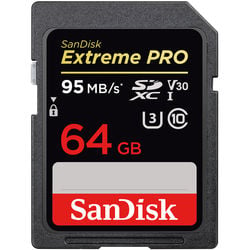
For UHS-I cards the Sandisk Extreme Pro has always been amazing and is a very reliable card for Sony cameras. This is actually what I use to use in my Sony A7r and A7rII.
– Amazon
Sony 64GB UHS-I U3
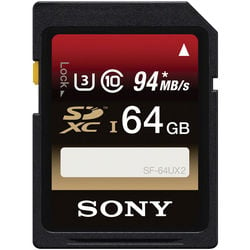
The Sony 64GB U3 memory card definitely isn’t the fastest UHS-I card, but there were a lot of problems with memory cards not being compatible with Sony cameras, especially when shooting video. So this card become one of my top 5 memory cards and is a safe bet.
– Amazon
Other Cards To Consider / Cards To Avoid
There are a few new brands out there that are making UHS-II memory cards like Hoodman Steel, Adata, and even Fujifilm and they are all great options if you can find them at a less expensive price. I’ve also had great success with Delkin cards in Sony cameras and they also make a few nice UHS-II cards.
For a while, a lot of people were buying PNY cards because they were such a great price. My PNY cards always work well, but there have been a lot of reported issues of them not working correctly in Sony cameras.
What to do if you get a bad card, or your card isn’t working
I’ve seen so many people who have had trouble with cards over the years and it always comes down to a few things.
First, they got a counterfeit card because they bought it off eBay.
Sometimes manufacturers have bad production runs. Nobody is immune to this. Lexar had a bad year last year and put out a lot of bad cards.
Some cameras don’t like some cards. Sony cameras don’t like Samsung Cards. I’ve even had a few issues with Transcend cards in a few Sony RX10 cameras where they would give me corrupted blue frames.
I’ve personally had issues with dirty cards; they would perform really slowly until I cleaned the contacts. Could have been oil smudges or something as simple as that.
I’ve seen people who have broken one of the UHS-II pins in the camera. So if you find yourself only getting UHS-I speeds and you’re using UHS-II cards in the UHS-II memory card slot, shine a flashlight into your camera and make sure none of your pins are bent, and obviously never force a card into the slot.
Cards have warranties, usually 3 years to a lifetime. You can always call in for a replacement. Or, if you’ve only had the card for a month, you can return it to Amazon. Most camera stores will actually take back cards from my experience.
UHS-II vs. UHS-I Memory Cards In The Sony A7r III
Sometimes people get confused on how the buffer works in the Sony A7rIII so I’ll clarify here. The Sony A7rIII has only one slot that is UHS-II compatible. If you shoot a backup to the UHS-I card, you memory card write speeds will be significantly cut to the performance of UHS-I.
If you shoot RAW+JPEG, you shouldn’t technically get a write speed drop if the JPEGs are going to the UHS-I card because the files are much smaller and the UHS-I card should be able to keep up, however, RAW+JPEG takes a lot more processing power and will fill the buffer a lot quicker, so you will see a significant performance loss in memory card write speeds since the camera has to do so much more work.
Shooting Uncompressed RAW will make massive files and you will fill your buffer a lot quicker, but they won’t slow down your memory card write speeds, you’ll just get overall less performance from the massive files. Honestly, I’ve done the tests, and I’ll do the tests again, there is really no point in shooting Uncompressed, it’s just not worth the .05% increase you get in image quality in the shadows. Sony just put that in their cameras for the most extreme camera nerds.
Finding The Best SD Memory Cards Sony A7rIII
If you don’t have access to my site and you need to buy a quick memory card here is a great way to figure out which card will work for you or not. It really comes down to which card will work for 4k video and if you remember this info you will be good to go.
Best Memory Card 4k Video Sony A7rIII
Sony upgraded their firmware last year so that you can now use SDHC memory cards for 4k video, however, you still need to use U3 memory cards. Here is a breakdown of some memory card stats and what all the numbers mean.
Class 10 / U1 – NO 4k!
Class 10 and U1 are one and the same. It has to do with the minimum write speeds a card is capable of. A Class 10 or U1 card should be able to sustain 10MB/s write speeds in any situation, sequential or random.
However, 4k will not work here.
U3 – 4k compatible
U3 is the minimum requirement for 4k video. It has a minimum performance speed of 30MB/s. So under any circumstance, it will be able to keep up with the 4k video bitrate demands regardless of whether the card is fragmented or not.
V30 – 4k compatible
V is the newest rating system. It also has to do with minimum write speeds. V30 is the same as U3, 30MB/s. It will also work for 4k videos. Typically if a card is V30 it’s also U3 and meets Sony’s requirements.
V60 – 4k compatible
Even faster than V30 is V60. 60MB/s guaranteed minimum write speeds. The thing is with the V60 and V90, although the cards can perform with the guaranteed write speed of 60MB/s it doesn’t mean the camera can. Usually, a memory card’s performance is limited by the camera’s capabilities.
V90 – 4k compatible
Like V60 this means minimum speeds of 90MB/s. You mostly only see this on UHS-II cards.
UHS-I
UHS-I memory cards have a single row of pins. They typically max out at a speed of around 70MB/s writing in camera. Except most Sony cameras cap out speeds at 30MB/s. The Sony A9 and the A7 III should all be able to see this 70MB/s performance cap with the improved bus speeds. Assuming the A7rIII has the same guts as the A9.
UHS-II
UHS-II cards are going to be the fastest memory cards for the Sony A7rIII. They have two sets of pins that allow more data to be written and read at the same time. I believe it sort of works as a dual channel, so you get two lanes of data and twice the speed of UHS-I cards
SDHC and SDXC
SDHC and SDXC have to do with the format of the cards. SDHC is 32-bit SDXC is 64-bit. Anything less than 64GB is going to be SDHC by default. SDXC is going to be anything 64GB and above. I also believe you will get a 4GB file limit with SDHC. I’m not sure yet what sort of limits the Sony A7rIII has with SDXC cards or with video recording.
| **This website contains affiliate links. We will earn a small commission on purchases made through these links. Some of the links used in these articles will direct you to Amazon. As an Amazon Associate, I earn from qualifying purchases. |

